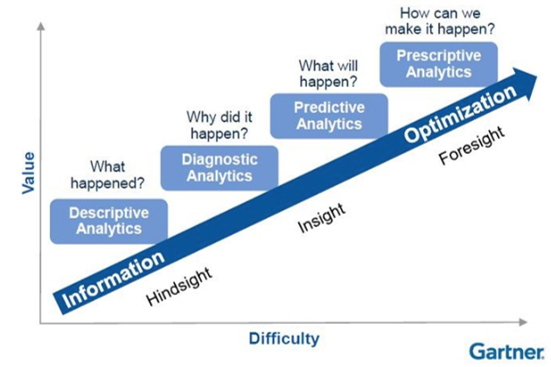A Quick Peek Into People Analytics
One of the big reasons to train people is so that they can directly drive business outcomes. But the challenge often is to prove it to the people who control your budget.
The purpose of people analytics is to clearly demonstrate and powerfully explain, how learning and development (L & D) contributes to business objectives and win over skeptical decision-makers.
In the past, people have accepted the notion that it is difficult, even impossible, to accurately measure the ROI of training. This has left many L&D professionals with the difficult task of making a data-based case for the value of training.
The result is that decision-makers judge training as a cost, not an investment, that when done well produces significant returns. A fallout of this for many L&D people is that they do not have a “seat at the table”, or worse, if they have a seat, they do not have the power and influence required to influence crucial strategic conversations.
With people analytics, we can speak to the “hard data” people so that they can clearly grasp the return on L & D.
For example, we can calculate the cost of lost productivity in dollars based on a number of factors in an algorithm. That process is done before the training starts and at specific points along the way to provide a clear ROI of the training – ie, comparing productivity before training and after to see the difference in productivity.
The Numbers Tell A Story – People Analytics
With the development of people analytics with algorithms, we can more easily identify patterns of behaviors in individuals, teams, and leaders. This can be a significant help to L&D professions because, in our 40 years of experience working in the behavioral sciences, it is apparent that people’s understanding of the world is always a matter of inference and interpretation.
Our judgments about people and situations, even our perceptions of the physical world, rely on stored knowledge and hidden mental processes and are hardly ever a direct readout of “reality.”
This latter perspective also presents an interesting challenge in that people will tend to trust their own judgment rather than the data that is presented.
It’s similar to being at the dinner table and having a family member declare, I don’t care what you say… Everyone is entitled to their own opinions. They are not entitled to their own facts.
It’s important to keep in mind that using people analytics with L&D do not need to be complicated to unlock value.
Quantifying insights through people analytics can help gain trust and overcome three obstacles to change:
- Resistance to Data – that’s not what my experience has shown.
- Resistance to Change – that’s the way we’ve always done it.
- Organizational Uniqueness Bias – that will not work here because….
Algorithms – A Cautionary Note
Additionally, our so-human-tendency to believe, or not be aware of, our biases creep into the development of the algorithms that power people analytics. This is a problem because most often algorithms are developed by digital types who have very little understanding of the dynamics of the behavioral sciences.
Google discovered this very expensive problem and had to completely re-jig some of its algorithms based on behavioral science.
It is critical that the assumptions behind the algorithm are made crystal clear. If along the way, any interpretative problems arise, you can have a discussion about their applicability.
The Process of Using People Analytics in L&D
We use and recommend Gartner’s information optimization as seen in the image below.Summary

There are many issues that surround the use of people analytics in L&D such as confidentiality, data purity, outdated ideas about human behaviors and data, fear of the unknown, fear of loss of control, just to name a few.
Leveraging people analytics in L&D data, we think, will become even more important to the success of businesses, especially as employee experience becomes important for retention concerns, how increasing employee lifetime value (ELTV) is key, given how expensive it is to find, hire and train up people, what is the right amount and quality of data, and interpreting results in a way that are interesting, meaningful and engaging.
Join us at the HR Conference & Expo, 2020 in Vancouver to explore some of these issues.
Entertaining and personable speakers, Renée and Jim bring their expertise and deep passion for teams to every audience. Participants leave with new insights into organizational health, the relevance of investing in teams for bottom-line performance, team-centric best practices, employee engagement and the 6 key indicators for highly functioning teams. Renée is the founder and CEO of Vivo Team, a data-driven analytics and training solutions company that activates talent and empowers employees.
For the latest HR and business articles, check out our main page.
Reader Feedback
We want to hear from you!
Do you have a story idea you’d like to see covered by PeopleTalk?
Or maybe you’ve got a question we could ask our members in our People & Perspectives section?
Or maybe you just want to tell us how much you liked the article.
The door is always open.








